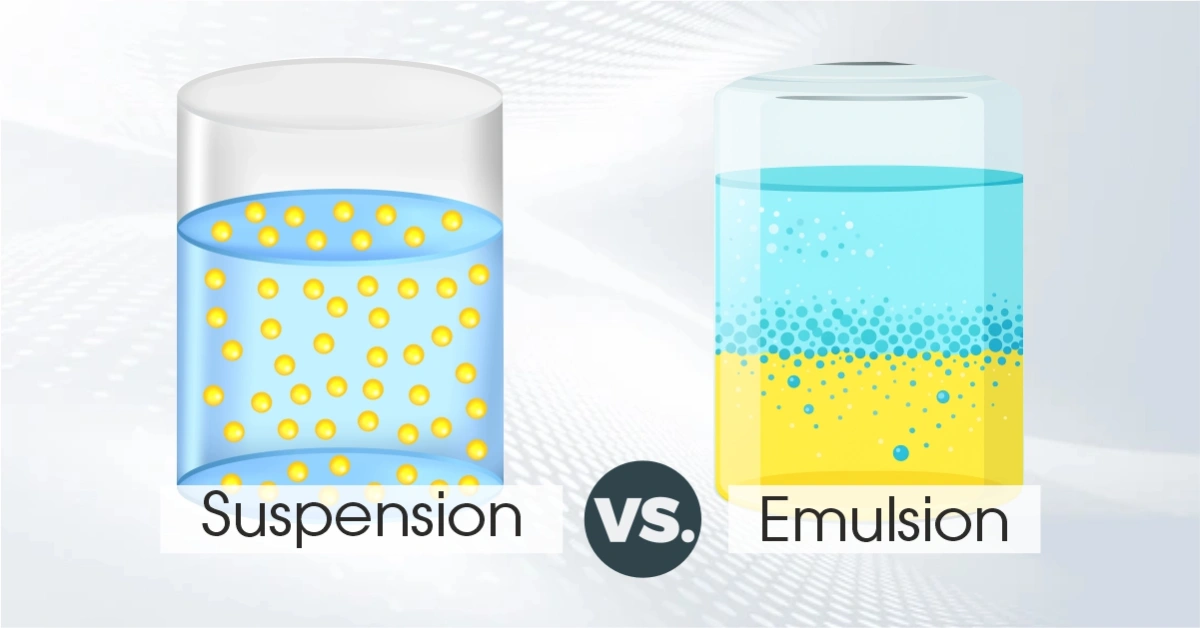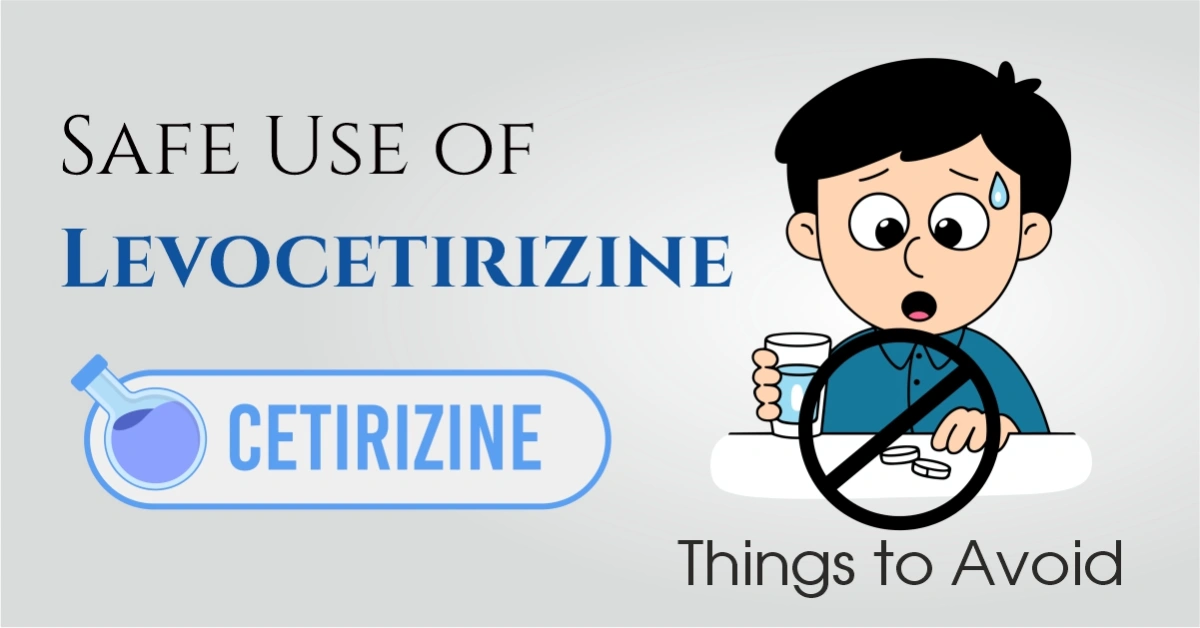A pharmaceutical suspension is a liquid form of medicine where tiny solid particles of a drug are evenly mixed in a liquid, but they don’t dissolve in it. These solid particles float or settle in the liquid over time and need to be shaken before use. This makes suspensions different from solutions, where the drug dissolves completely.
To explain it simply, think of it like chocolate powder in milk. If you just stir it, the powder stays suspended for some time and settles later. You have to shake or stir again before drinking. In the same way, a suspension solution in pharmacy works when the medicine isn’t soluble enough to make a clear solution.
The suspension definition in pharmacy refers to this controlled mixing of solid drug particles in a liquid base (usually water or oil). This helps deliver the right dose of medicine, especially in forms that are easier to swallow or apply. Some common examples include paracetamol suspension for children, antacid suspensions for acidity, or even injectable suspensions like some hormonal drugs.
Want to understand how suspensions are different from syrups? Read this simple comparison here.
Suspensions are used across different dosage forms — from oral syrups, topical lotions, to injectable formulations — depending on how the drug needs to act in the body. They offer flexibility when tablets aren’t suitable or when local action is needed.
Why Are Suspensions Used in Pharmaceutics?
Not every drug dissolves well in water or other common solvents. When a drug’s solubility is poor, making a solution becomes difficult. In such cases, suspensions are the best alternative. By suspending the fine particles of the drug in a liquid, the medicine can still be delivered effectively, even if it doesn’t fully dissolve. This is one of the major reasons behind the use of suspension in pharmacy.
Another big reason is patient-friendly dosing, especially for those who can’t swallow tablets — like children, elderly people, or patients with throat issues. A liquid suspension is easier to swallow and allows for flexible dosing. For example, in pediatric medicine, paracetamol or antibiotics are often given in suspension form because they taste better and can be measured accurately with a spoon or dropper.
Suspensions are also useful when doctors want the medicine to work slowly over time or act only in a specific area. This is called controlled drug release or localized action. For instance, some injectable suspensions are designed to release the drug over several days. Topical suspensions, like calamine lotion, work right where they’re applied — without affecting the whole body.
Because of these advantages, the importance of suspension in pharmaceutical formulations is huge. They allow flexibility, better patient compliance, and effective drug delivery — especially when tablets or capsules just won’t work.
How Are Suspensions Classified?
Based on Dosage Form
Suspensions can be classified by how they are given to the patient. The most common type is the oral suspension, which is usually given to children or people who can’t swallow tablets. These come in the form of flavored syrups like paracetamol or antibiotics.
Then there are topical suspensions, used on the skin — like calamine lotion — to treat itching, rashes, or minor burns. The third type is parenteral or injectable suspensions, which are injected into the body when a slow or long-acting effect is needed. These include certain hormonal or anti-inflammatory drugs.
Based on Particle Behavior
This classification looks at how the suspended particles behave inside the liquid.
- Flocculated suspension: Here, particles form loose clumps or networks called “flocs.” These settle quickly but can be easily shaken and re-dispersed. They don’t form hard cake at the bottom, so they’re easier to use.
- Deflocculated suspension: In this type, particles stay separated and settle slowly. But once settled, they may form a hard, compact layer that is difficult to mix again.
Based on Purpose
Suspensions are also grouped by their use or function.
- Therapeutic suspensions: These include medicines used for treating illnesses — like antibiotic suspensions or antacids for acidity relief.
- Diagnostic suspensions: Some suspensions are used to help doctors during tests, like barium sulfate suspension used in X-ray imaging.
- Cosmetic suspensions: These are found in skincare products like medicated lotions or acne treatments, where the medicine needs to stay on the skin surface.
All these types are part of the broad classification of suspension used in pharmaceutical science, each with its own role in patient care.
Suspension vs Emulsion: Key Differences

| Parameter | Suspension | Emulsion |
|---|---|---|
| Phases Involved | Solid particles dispersed in a liquid | Two immiscible liquids mixed together |
| Common Example | Paracetamol suspension for children | Milk, cream, or medicated lotion |
| Stabilizers Used | Suspending agents like CMC or xanthan gum | Emulsifying agents like lecithin or polysorbate |
An emulsion is a liquid dosage form where two immiscible liquids (like oil and water) are mixed with the help of an emulsifying agent. It is used when the drug is in liquid form and needs to stay stable in another liquid base — like in lotions, creams, or oral drops.
A suspension is a system where a solid drug is mixed in a liquid but doesn’t dissolve, like sand in water. On the other hand, an emulsion is a mixture of two liquids that don’t mix well naturally, like oil and water. Both forms need special stabilizers to remain usable — suspending agents in suspensions, and emulsifying agents in emulsions.
Understanding the difference between suspension and emulsion is important because they behave differently in terms of stability, absorption, and application. In pharmacy, both are used for different purposes — based on the drug’s properties and how it should be delivered in the body.
Ideal Properties of a Pharmaceutical Suspension
- The particle size should remain uniform so that each dose delivers the same amount of drug. This helps maintain consistency throughout the suspension.
- It must re-disperse easily on shaking. When the solid particles settle, a gentle shake should bring them back into a uniform mix without forming lumps.
- The suspension should stay physically and chemically stable, meaning it should not separate, react, or degrade over time. It must also be non-caking, so settled particles don’t form a hard layer at the bottom.
- The flow of the liquid should be smooth and easy to pour. Along with that, the suspension should have an acceptable taste and smell, especially for oral formulations like pediatric syrups.
These are considered the ideal properties of suspension in pharmaceutical formulations — they ensure patient compliance, proper dosing, and product safety over its shelf life.
Common Problems in Suspensions
Even though suspensions are useful, they come with some common issues that affect product quality and patient safety. One of the most frequent suspension problems is sedimentation, where solid particles settle at the bottom of the bottle over time. If this is not handled properly, it can lead to caking, where the particles form a hard, compact layer that doesn’t mix well again — even after shaking.
Another issue is phase separation, especially if the formulation lacks proper stabilizers. In this case, the solid and liquid parts start to separate visibly, which makes the suspension look spoiled or unreliable. It also affects the accuracy of the dose.
In some cases, even after shaking, the particles don’t mix well — this is called poor re-dispersibility. It can lead to underdosing or overdosing, depending on which part of the suspension is poured.
To maintain the stability of suspension, formulators often add wetting agents to help particles mix well with the liquid base, and surfactants to keep them evenly distributed. These ingredients improve both physical stability and shelf-life, ensuring the medicine works the way it should every time.
FAQs
What is the difference between emulsion and suspension?
A suspension contains solid particles in a liquid, while an emulsion is made of two immiscible liquids. Suspensions need suspending agents, and emulsions use emulsifying agents to stay stable.
Which drugs are commonly available as suspensions?
Common pharmaceutical suspensions include paracetamol, azithromycin, antacids, iron supplements, and oral corticosteroids — mostly in syrup form for easy dosing.
Are suspensions safe for children?
Yes, suspensions are often preferred for children and elderly patients because they’re easier to swallow, allow flexible dosing, and can be flavored to improve taste. Still, proper shaking and dosing are essential.
How long do suspensions stay stable after opening?
Most suspensions remain stable for 7 to 14 days after opening, depending on storage conditions and formulation. Always check the label or consult a pharmacist before continuing use
What is the QC test for suspension?
The Quality Control (QC) tests for suspensions include:
Sedimentation rate
Redispersibility
Viscosity measurement
pH testing
Uniformity of drug content
These tests ensure the suspension is stable, safe, and gives accurate dosing.




